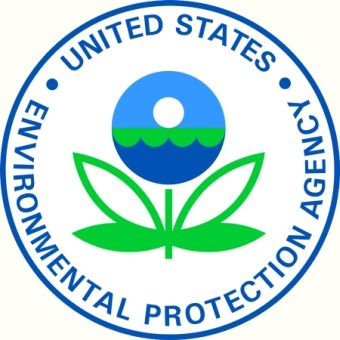
Publisher:
Bonnie King
CONTACT:
Newsroom@Salem-news.com
Advertising:
Adsales@Salem-news.com

~Truth~
~Justice~
~Peace~
TJP
Jan-05-2012 13:28

 TweetFollow @OregonNews
TweetFollow @OregonNews
Toxic chemical releases increased in 2010 throughout the Pacific Northwest and Alaska
Salem-News.comIncludes TRI data broken out by industry, chemicals, and facilities for Alaska, Idaho, Oregon, and Washington.
 Salem-News.com |
(WASHINGTON, D.C.) - Recent data from the federal Toxics Release Inventory (TRI) shows that toxic chemical releases rose in Alaska, Idaho, Oregon, and Washington. The 2010 TRI reports how over 600 chemicals on the TRI list were managed, where they ended up, and how 2010 releases compare to 2009.
The 2010 TRI National Analysis shows that TRI releases rose 16 percent across the nation between 2009 and 2010, reversing a downward trend from recent years. Similarly, toxic chemicals releases rose in all four EPA Region 10 states (Alaska, Idaho, Oregon and Washington) compared to 2009:
- In Alaska, 32 facilities reported a total of 835 million pounds of toxic chemical releases, an increase of 20 percent.
- In Idaho, 95 facilities reported a total of 67 million pounds of toxic chemical releases, an increase of 17 percent.
- In Oregon, 271 facilities reported a total of 18 million pounds of toxic chemical releases, an increase of 20 percent.
- In Washington, 304 facilities reported a total of 20 million pounds of toxic chemical releases, an increase of 27 percent.
“The availability of this data allows the public to have better information when they engage with industry and the government,” said Ed Kowalski, EPA’s Director of the Office of Compliance and Enforcement in Seattle. “You can see trends at the national and statewide levels, and you can monitor what is happening in your ZIP code.”
This year, almost 90 percent of all TRI chemical releases in Region 10 are attributed to the metal mining industry in Alaska. Throughout the region, the mining industry increased reported releases by 19 percent compared to 2009. Increases reported from metal mines can be due to increased production, variations in ore composition, or changes in production processes.
A TRI chemical ’release’ is the amount of a toxic chemical that a facility disposes of, or discharges to the environment. The actions that facilities take to dispose of or release TRI chemicals are generally regulated under other environmental laws, such as the Clean Air Act, the Clean Water Act, or the Resource Conservation and Recovery Act. TRI data do not include information about public exposure to chemicals.
The 2010 TRI National Data Analysis includes detailed reports that are relevant for local communities throughout Region 10. The analysis provides new information on health risks, facility efforts to reduce pollution, and details about how possible economic impacts could affect TRI data. It also provides focused summaries for the Columbia River Basin, the Puget Sound-Georgia Strait, Indian country and Alaskan Native Villages, and the Seattle metropolitan area (King, Pierce and Snohomish Counties).
EPA makes toxic chemical release information available to the public as directed by the Emergency Planning and Community Right-to-Know Act (EPCRA). This year marks the 25th anniversary of this landmark community right-to-know legislation.
In 1984, a deadly cloud of methyl isocyanate killed thousands of people in Bhopal, India. Shortly thereafter, there was a serious chemical release at a sister plant in West Virginia. These incidents accelerated demands by communities and environmental organizations for information on toxic chemicals being released "beyond the fence line" -- outside of the facility.
Against this background, EPCRA was enacted in 1986. In the past 25 years, EPA has steadily increased the number of industries that report and the number of chemicals that are reportable under the TRI, giving the public greater information about the toxic chemicals that are released near their neighborhoods.
Reports that show TRI data broken out by industry, chemicals, and facilities for Alaska, Idaho, Oregon, and Washington: www.epa.gov/region10/tri/
EPA’s TRI website with links to the 2010 National Data Analysis and TRI tools: http://www.epa.gov/tri
EPCRA’s 25th anniversary: http://www.epa.gov/
EPA National TRI News Release: http://yosemite.epa.gov/opa/
 |
 |
 |
 End Israeli apartheid |
Articles for January 4, 2012 | Articles for January 5, 2012 | Articles for January 6, 2012
Quick Links
DINING
Willamette UniversityGoudy Commons Cafe
Dine on the Queen
Willamette Queen Sternwheeler
MUST SEE SALEM
Oregon Capitol ToursCapitol History Gateway
Willamette River Ride
Willamette Queen Sternwheeler
Historic Home Tours:
Deepwood Museum
The Bush House
Gaiety Hollow Garden
AUCTIONS - APPRAISALS
Auction Masters & AppraisalsCONSTRUCTION SERVICES
Roofing and ContractingSheridan, Ore.
ONLINE SHOPPING
Special Occasion DressesAdvertise with Salem-News
Contact:AdSales@Salem-News.com

googlec507860f6901db00.html



Terms of Service | Privacy Policy
All comments and messages are approved by people and self promotional links or unacceptable comments are denied.
[Return to Top]
©2025 Salem-News.com. All opinions expressed in this article are those of the author and do not necessarily reflect those of Salem-News.com.